The word ‘monster’ evokes images of beings that possess human or animal physicality that have been distorted in some ways. They are all invested with physical characteristics or a repertoire of movements that are meant to unsettle the viewer with the intention of generating fear.
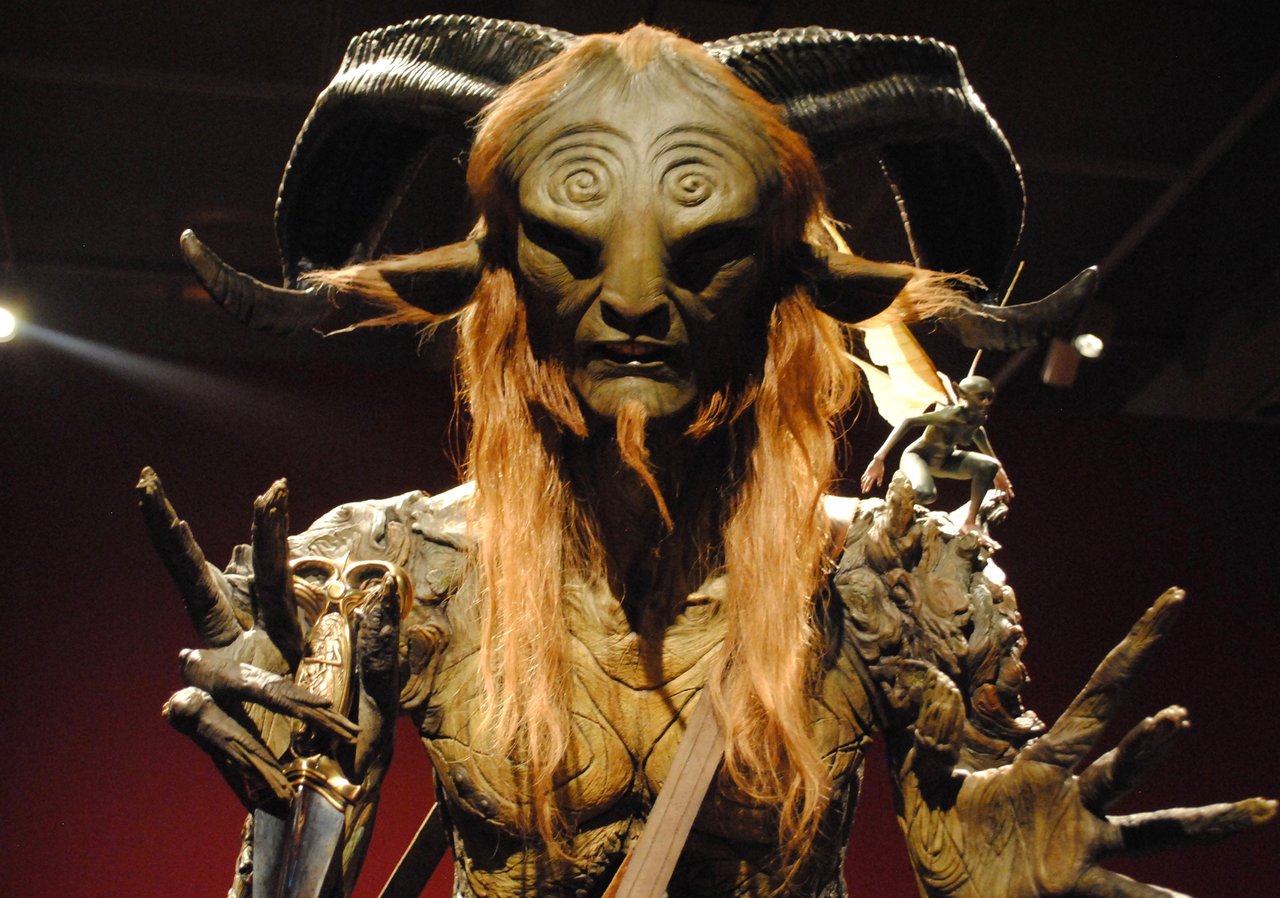 Guillermo Del Toro, At Home with Monsters, the Faun from Pan’s Labyrinth. Photo: Patricia Tabascio
Guillermo Del Toro, At Home with Monsters, the Faun from Pan’s Labyrinth. Photo: Patricia Tabascio
Monsters are the focus of the Art Gallery of Ontario’s latest exhibition, At Home With Monsters – taking us into the home (and ultimately into the mind) of acclaimed filmmaker Guillermo Del Toro, for whom monsters have provided a source of inspiration. Comprised primarily of Del Toro’s personal art collection (normally at his California compound, Bleak House) the exhibition includes many of his first artistic purchases and all those he amassed thereafter, including memorabilia from his famous films that have made him one of today’s greatest storytellers.
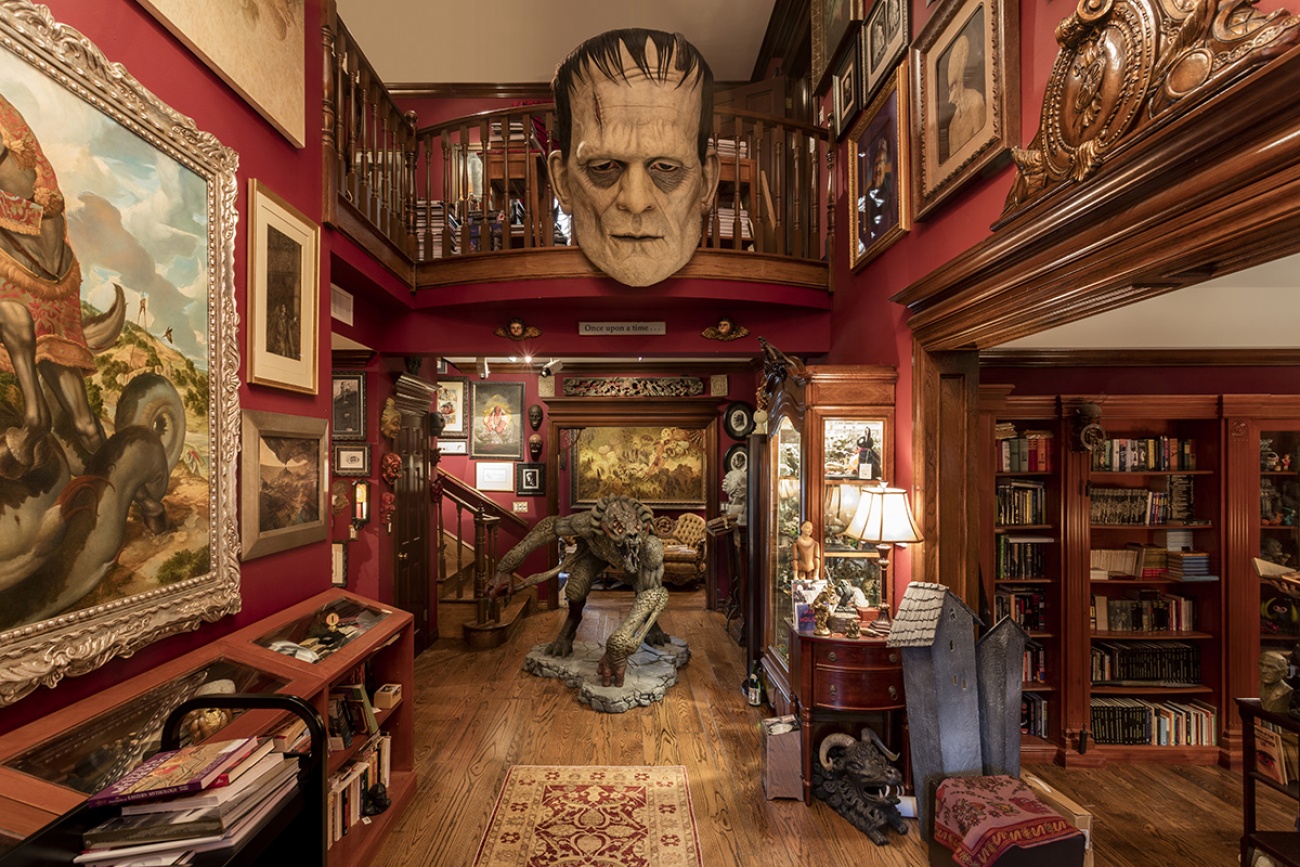 Guillermo Del Toro’s Bleak House. Photo: Josh White / JWPictures.com
Guillermo Del Toro’s Bleak House. Photo: Josh White / JWPictures.com
Made up of a variety of media, Del Toro’s entire collection is thematically organized into thirteen sections, seven of which are on display in the AGO’s exhibition. Bleak House, as the artist describes in his audio tour, is a large Cabinet of Curiosities where there is no division between high and low culture. A section is dedicated to the importance of Del Toro’s childhood influences and inspirations. He was five years old when he first visited Disneyland and it was the dark side that caught his attention, like the witch in Snow White. Horror genre literature and arts are also intrinsic to his unique visual style as a filmmaker. Children often play central roles in Del Toro’s films, like the little girl in Pan’s Labyrinth. Large areas are dedicated to his most recognized films, Pan’s Labyrinth and Hellboy. Pan is not only the eater of children but eats innocence as well. One of the scariest figures is the one without a face, having his eye displaced in his palm. Removing the eyes from the face is like removing the soul — a horrifying gesture that also reminds us of a stigmata.
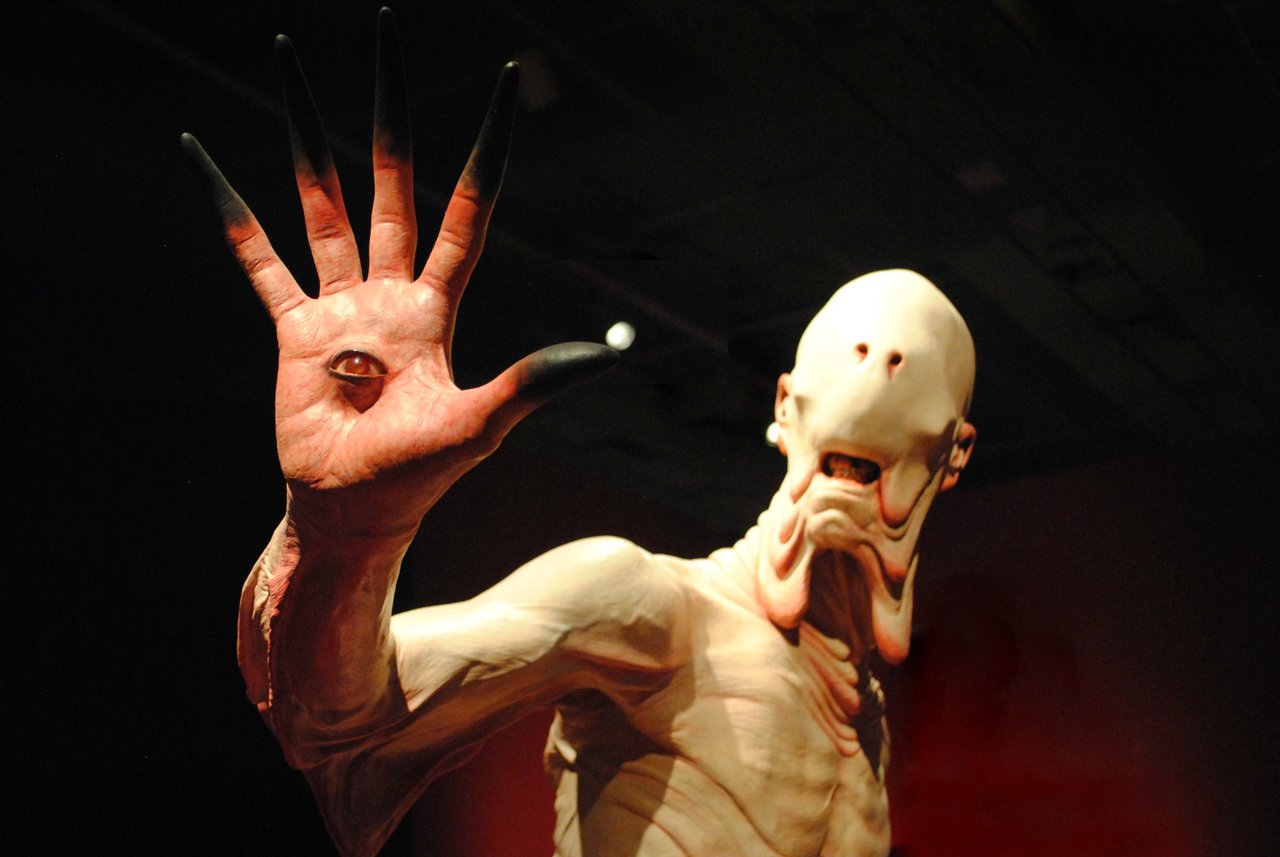 Guillermo Del Toro, At Home with Monsters, the pale man from Pan’s Labyrinth. Photo: Patricia Tabascio
Guillermo Del Toro, At Home with Monsters, the pale man from Pan’s Labyrinth. Photo: Patricia Tabascio
Del Toro was obsessed with cinema, from B-movies and horror films of Alfred Hitchcock and Luis Buñuel to magic, alchemy and the occult. Frankenstein’s portrait by Mike Hill (2011) was a must to have, since what Frankenstein represents, as Del Toro said, is instrumental to his view as a filmmaker. He feels that we are all alone, our innocence lost. This loneliness drives him to sympathize with outcasts, causing his life-long affinity with monsters because of their shared feeling of otherness.
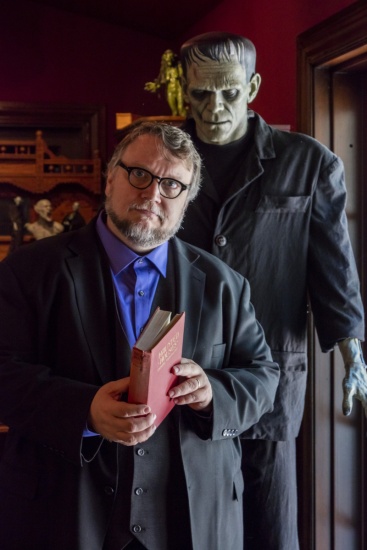 Portrait of Guillermo Del Toro at Bleak House. Photo: Josh White / JWPictures.com
Portrait of Guillermo Del Toro at Bleak House. Photo: Josh White / JWPictures.com
At Home With Monsters peaks a child-like curiosity in the viewer, whether one is a fan of Del Toro’s films or just generally fascinated by horror movies and literature. The exhibition provides a glance into the preliminary creative process of filmmaking that is often overlooked, resulting in a more stimulating experience than an average art exhibit.
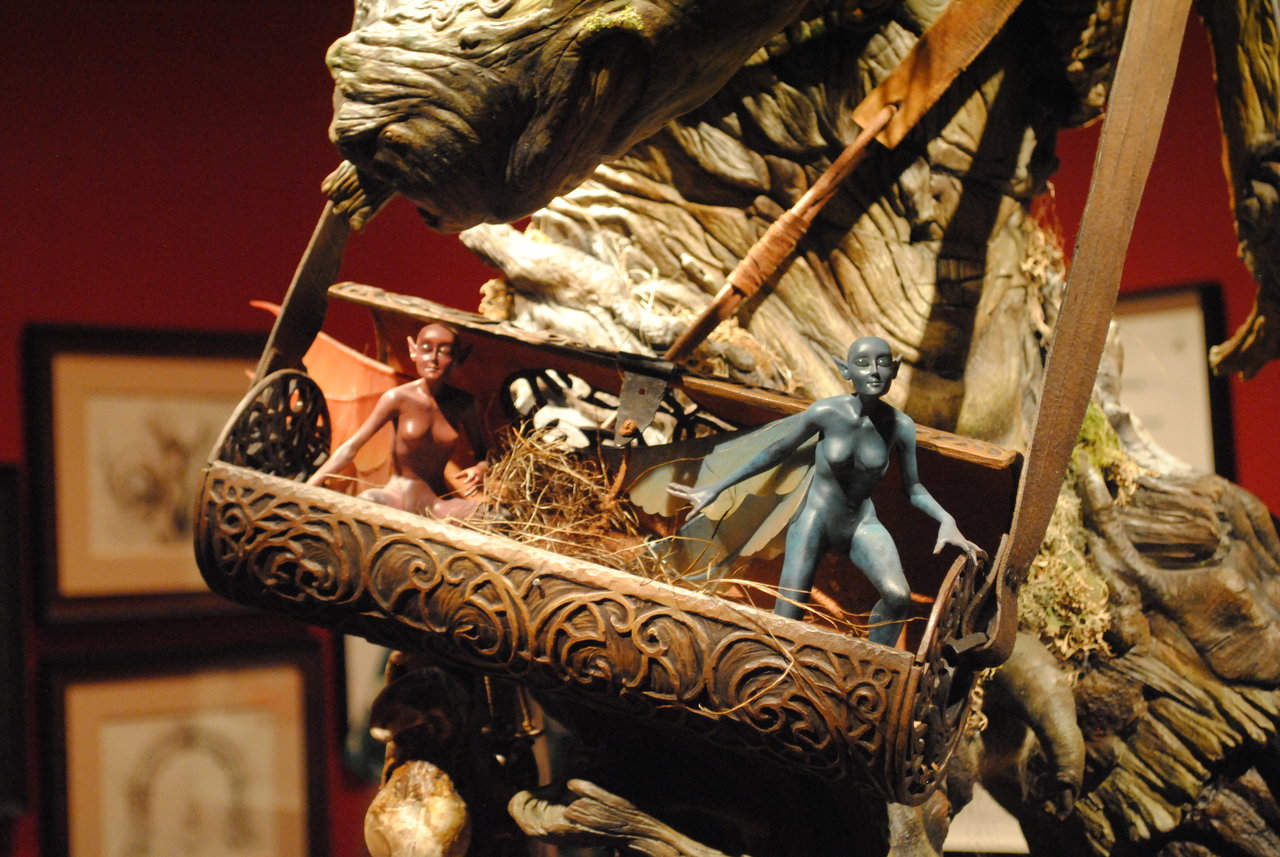 Guillermo Del Toro, At Home with Monsters, fairies from the Insects section, installation view. Photo: Patricia Tabascio
Guillermo Del Toro, At Home with Monsters, fairies from the Insects section, installation view. Photo: Patricia Tabascio
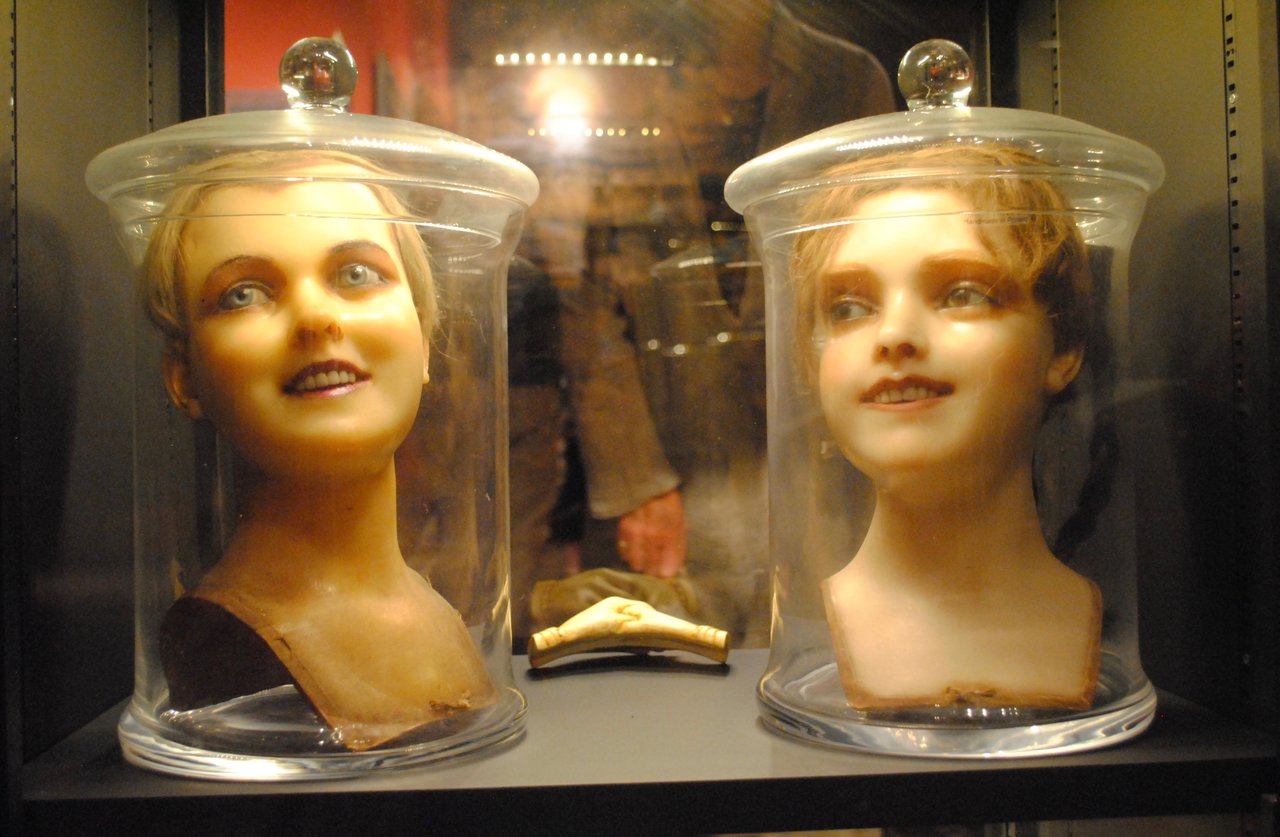 At Home With Monsters, installation view with doll heads. Photo: Patricia Tabascio
At Home With Monsters, installation view with doll heads. Photo: Patricia Tabascio
The number of art objects in this exhibition might seem overwhelming and their significance difficult to grasp, however, with a second run through the exhibit, one can interpret them as a window into Del Toro’s mind. At Home With Monsters challenges the exhibition-goer’s expectation of viewing art that is horrifying, unsettling and that is highly personal to Del Toro and his work, while also questioning the very idea of monsters. As the viewer proceeds deeper into the exhibition and gains more understanding of Del Toro’s view that “what make us human is that we can choose to be heroes or villains.” The monsters that are charged with symbolic power are often misunderstood, since the real horror lies not in their noticeable physical differences but our attainment of perfection and uniformity. At Home With Monsters appropriately concludes with a drawing from Del Toro’s most recent film, The Shape of Water. The image displays the film’s protagonists (a mute woman and a sea monster) lovingly holding one another as they are submerged, encapsulating the totality of the filmmaker’s perception of monsters and the objective of this exhibition.
Patricia Tabascio
*Exhibition information: till January 7, 2018, AGO, 317 Dundas St. W, Toronto. Gallery hours: Tue & Thur 10:30 – 5 pm; Wed & Fri 10:30 – 9 pm; Sat & Sun 10:30 – 5:30 pm.
